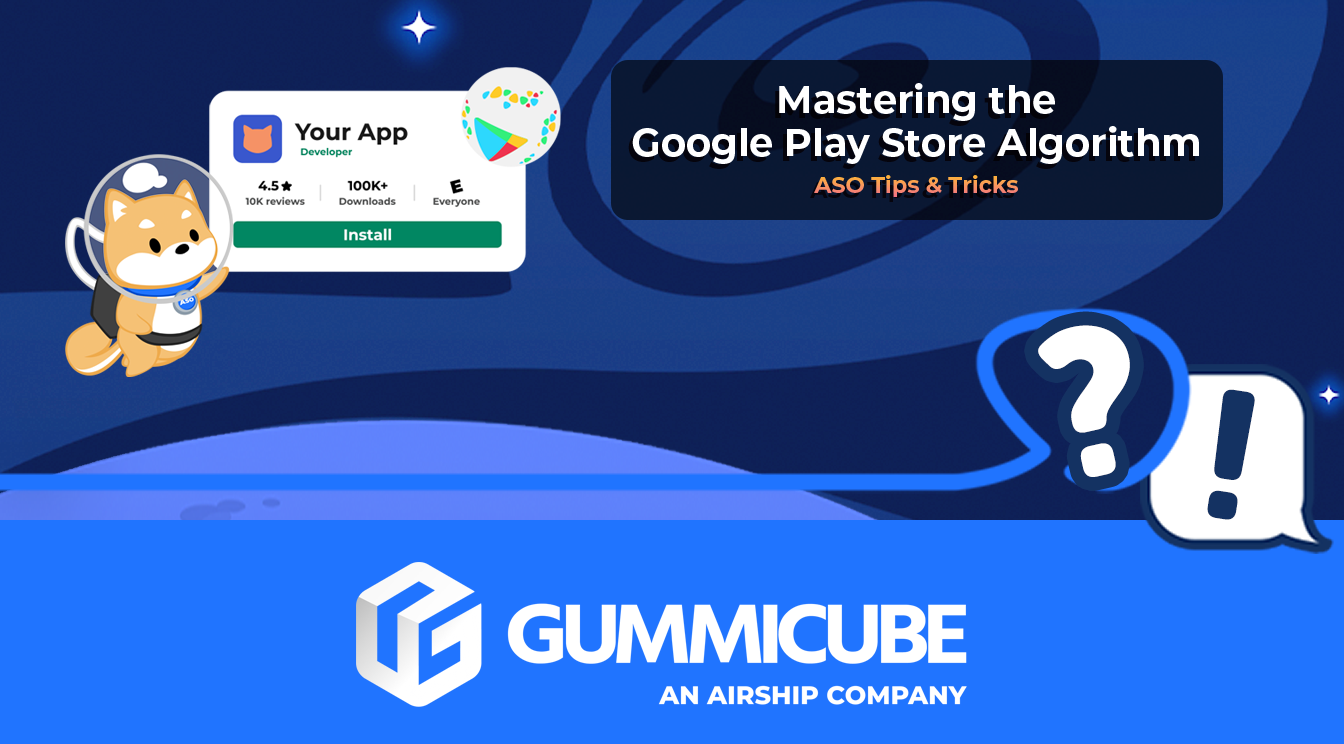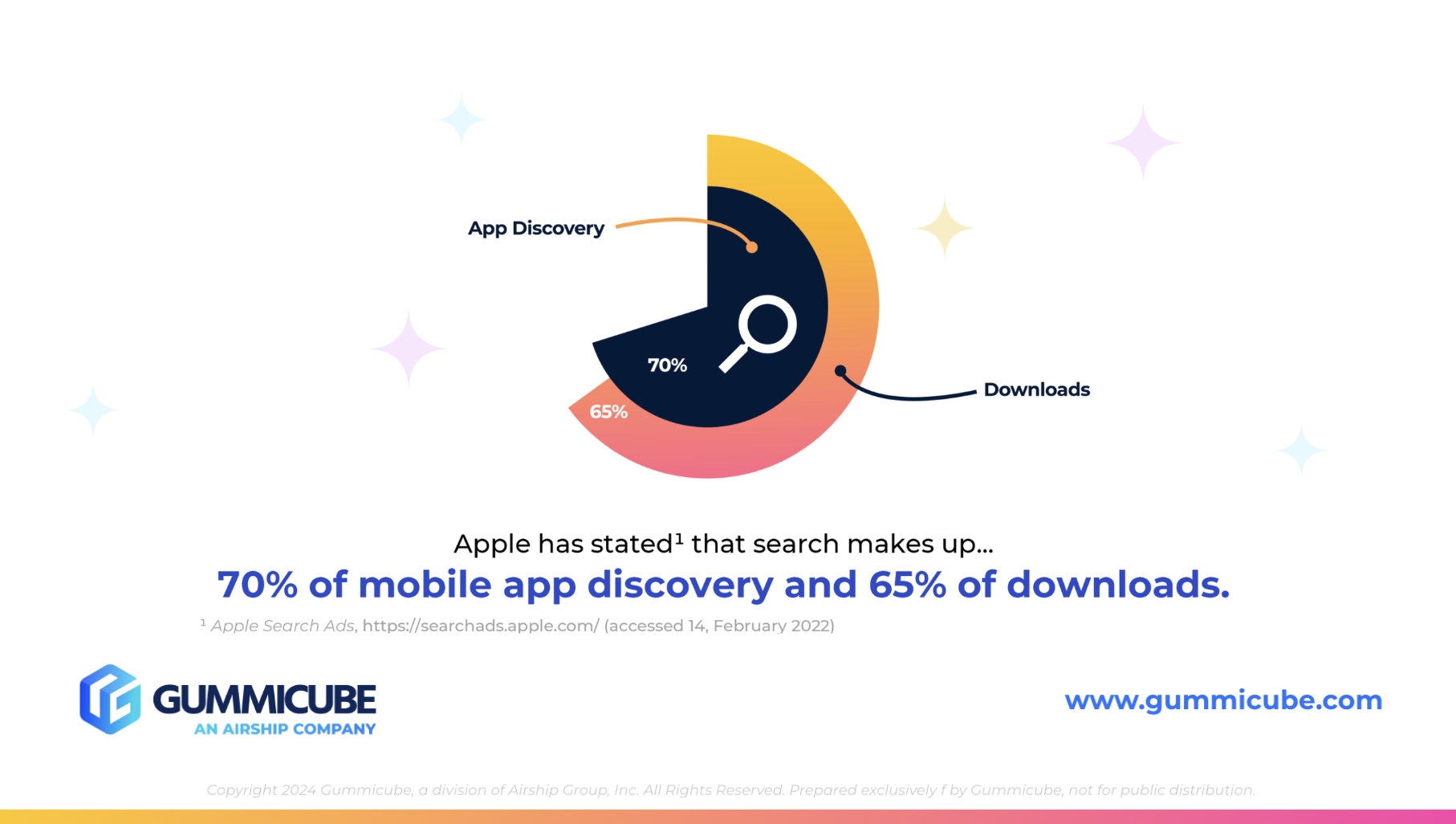
Mastering the Google Play Store Algorithm
Posted on April 16th, 2025
Learn how to work with the Google Play Store algorithm using high-level ASO strategies that improve visibility, performance, and long-term app success.

App visibility and conversion rates are dependent on a quality App Store Optimization (ASO) strategy. Prioritizing keywords in your app’s title, subtitle, screenshots, and description is important. However, many developers make the mistake of keyword stuffing—cramming in too many keywords to boost rankings. Using keywords incorrectly can actually do more harm than good.
In this blog, we’ll explore ASO best practices, the role of keywords, and how to optimize metadata without compromising user experience or risking app rejection.
Keywords play a fundamental role in ASO by helping Apple and Google understand what your app is about. They are the terms users type into the App Store or Google Play to find apps relevant to their needs. Proper keyword usage means strategically placing relevant terms in your app’s title, subtitle (iOS), short description (Google Play), and full description. However, blindly adding as many keywords as possible is not the way to go—both users and app store algorithms value clarity and relevance over sheer volume.
iOS App Store and Google Play Store search algorithms consider more than just raw keyword density. Factors like user engagement, retention rates, and app performance also play a major role in ranking. Developers need to take a holistic approach to ASO by focusing on both keyword integration and user experience.

Finding the right balance between optimization and readability is crucial for ASO success. Stuffing metadata with keywords might seem like an easy way to boost rankings, but it often results in poor user experience, reduced engagement, and even app rejections. You want your keyword placement to enhance your app’s search results rather than to diminish it.
Apple states that App Search makes up 70% of mobile app discovery, and 65% of downloads.
So, instead of cramming keywords wherever possible, developers should focus on creating clear, informative, and engaging metadata that naturally incorporates relevant terms that you would like to rank for. Mobile A/B testing can play a vital role in discovering a keyword-rich title or subtitle that works well for your app’s audience. Having a well-planned strategy for your app title and description will not only improve search rankings but also attract high-quality users who are genuinely interested in your app.
To maximize ASO without keyword stuffing, follow these best practices:
Your title and description should clearly communicate what your app does. Your app’s top features or unique traits are what need the most attention in your metadata. If users can’t understand your app from its title, it’s not effective and you could lose conversions. Focus on clarity and simplicity over excessive keyword inclusion. You need to strive to have an app description that engages potential users, encourages them to download, and leads them to interact with your app.
Keywords play a huge role in how your app appears when searched. Unfortunately, excessive or repetitive use of keywords can do more harm than good for your app. Keywords should fit seamlessly into the metadata. Awkward phrasing or overly forced keyword placement can make descriptions difficult to read and deter potential downloads. Your goal should be to naturally incorporate keywords in a meaningful way that represents your brand effortlessly. Avoid repeating the same keywords multiple times, and use variations and synonyms where possible.
Not only can keyword stuffing deter downloads, it can also lead to rejections during the review process. Both the iOS App Store and the Google Play Store prioritize user experience and penalize apps that appear spammy. Developers should always reference the latest metadata policies before submitting an update to avoid rejection. You want to avoid delaying any app updates due to the negative effect this can have on your app rankings and discoverability.
A long, keyword-heavy title can confuse users and hurt conversions. Using more keywords can be beneficial, but they need to fit naturally. Rather than filling your title and subtitle just to maximize character count, prioritize clarity and relevance. Stick to a clear, brand-aligned title that includes one or two strong keywords. Shorter, more focused titles are easier to remember and recognize in search results.
Apple provides a dedicated keyword field, allowing developers to focus on readability in the visible metadata while still optimizing for searchability. Instead of forcing excess keywords into the title or description, developers should take advantage of this feature to enhance discoverability. Google Play, on the other hand, does not have a separate keyword field, so developers must carefully balance keyword usage within the app description itself.
ASO is an ongoing process that requires regular attention, analysis, and action steps. Monitor keyword performance, A/B test descriptions, and refine your approach to maintain visibility and rankings. Trends and user search behaviors change daily, so regularly updating your metadata helps ensure your app performs well in search results. Regular updates can also improve engagement by staying up to date with seasonal trends, launching new app features, or showing off positive user feedback.
Keyword stuffing may seem like a shortcut to higher rankings, but it often backfires. Here’s why:
If a title is overloaded with keywords, it becomes difficult to read. Users may perceive the app as low-quality or spammy and avoid downloading it. A confusing title or description can cause potential users to abandon your app listing altogether. High-quality apps prioritize readability and engagement over forced keyword insertion.
Apple and Google have become increasingly strict about metadata guidelines. Apps with unnatural keyword usage are more likely to be rejected during the review process. This can delay updates or force developers to make rushed revisions to comply with store policies. Having an app removed or rejected due to keyword stuffing can set back an ASO strategy significantly.
Misleading metadata can attract users who don’t find what they expect, leading to higher uninstall rates and lower long-term success. If an app’s description doesn’t accurately reflect its features, users are less likely to engage or retain the app over time. It is important to note that high uninstall rates can negatively impact your keyword ranking (specifically on the Google Play Store), further reducing visibility in search results. This makes a well-thought-out ASO strategy even more important.
Users who feel misled by an app’s description are more likely to leave negative reviews, harming the app’s overall rating. Since both Apple and Google factor ratings and reviews into ranking algorithms, misleading metadata can create a cycle of poor performance and reduced discoverability. Instead of artificially boosting rankings with excessive keywords, focus on providing a compelling and accurate description that resonates with potential users.
To achieve sustainable ASO success, developers should integrate ASO into their overall marketing and user acquisition strategy. Here are some additional steps to take:
Effective ASO is about balance. Keywords matter, but clarity and user engagement should always come first. By crafting a well-structured title and description that naturally integrates relevant keywords, you can improve visibility without jeopardizing user trust or compliance with app store policies. High-quality users—those who genuinely need and benefit from your app—are far more valuable than artificially inflated rankings from spammy tactics.
Sustainable ASO requires a comprehensive approach, analysis, and regular attention or maintenance. From keyword research and metadata optimization to visual assets and engagement tracking, every element plays a role in an app’s success. Developers should prioritize user experience while staying informed on app store trends to maintain competitive visibility.
Optimizing an app for long-term success requires expertise and a strategic approach. If you’re looking to refine your ASO strategy while maintaining a high-quality user base, Gummicube is here to help. With 15 years of experience in ASO, we offer a complete App Store Optimization service for any app, in any category. Reach out to learn more about how you can enhance your app’s visibility the right way!

Learn how to work with the Google Play Store algorithm using high-level ASO strategies that improve visibility, performance, and long-term app success.

Boost app installs with smarter App Store marketing. Learn how ASO, creative assets, and paid strategies work together to drive growth and visibility.

Choosing the right app category is crucial for ASO success, impacting visibility, rankings, and user growth. Discover how the wrong choice can hold you back.